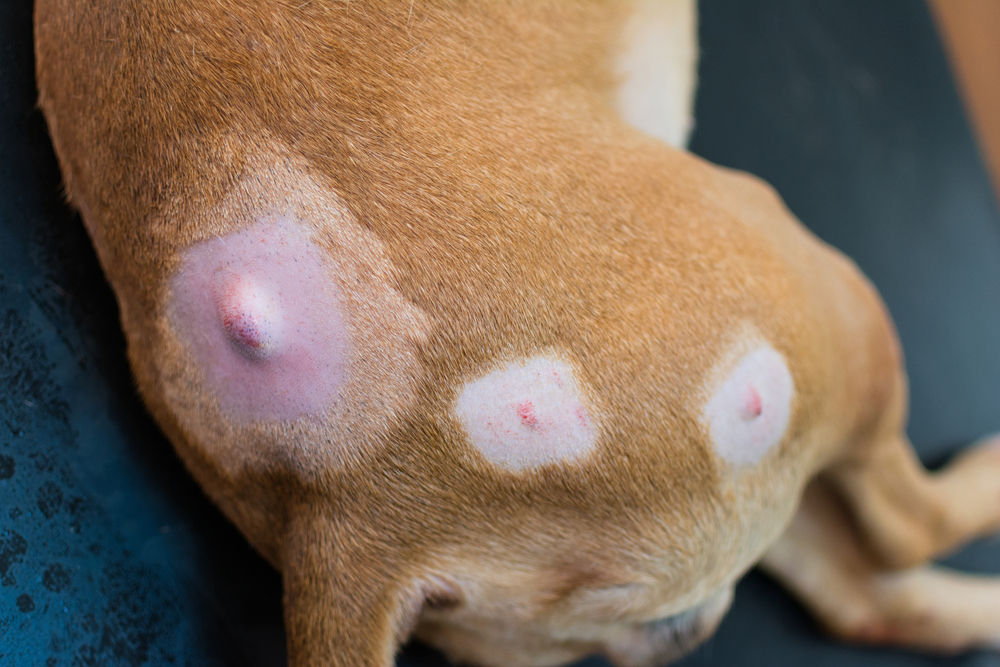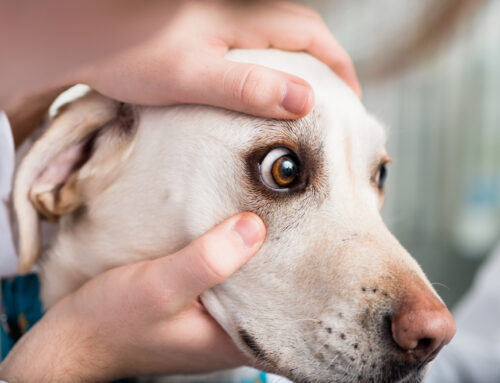Discovering a lump or bump on your pet can be concerning. While many are harmless, some may indicate serious health issues requiring immediate veterinary attention. Understanding the different types of lumps, their causes, and when to seek professional care can help ensure your pet’s well-being.
At Southern Arizona Veterinary Specialty & Emergency Center, our team specializes in diagnosing and treating pet masses, providing expert care to keep your pet healthy.
Common Causes of Lumps and Bumps in Pets
Benign Growths (Usually Non-Emergencies)
- Lipomas: Soft, movable, fatty lumps beneath the skin. Common in older or overweight pets and typically harmless unless they interfere with movement.
- Sebaceous Cysts: Fluid-filled or sebaceous gland blockages. Can rupture or become infected but are usually not serious.
- Elbow Calluses: Thickened skin over pressure points, common in large dogs. Learn more: Dog Elbow Callus Guide.
- Hygromas: Fluid-filled swelling over joints from repeated pressure. Can become infected and require treatment. More info: Swelling on a Dog’s Elbow: Tumor or Hygroma?.
Skin Infections and Abscesses
- Abscesses: Common in cats due to bite wounds, appearing as swollen, warm, painful lumps filled with pus. May require drainage and antibiotics. More info: Cat Abscesses – Symptoms and Treatment.
- Infected Cuts or Wounds: Swelling, heat, and discharge can indicate infection and require veterinary care.
Parasitic and Environmental Reactions
- Cuterebra (Botfly Larvae Infestation): Large, inflamed lumps caused by larval migration under the skin. Veterinary removal is necessary. Learn more: Cuterebriasis in Pets.
- Foxtails and Foreign Bodies: Small, hard swellings can be caused by embedded plant awns or foreign materials. Requires veterinary extraction. Learn more: Foxtail Dangers for Pets.
- Allergic Reactions (Hives or Swellings): Sudden lumps appearing due to allergens, insect stings, or medications. May require antihistamines or emergency care. More info: Hives Due to Allergies.
Cancerous Tumors (Require Veterinary Assessment)
- Mast Cell Tumors: Can be small but aggressive, releasing histamine that causes swelling and irritation.
- Melanomas: Often dark, appearing on the skin, mouth, or toes.
- Sarcomas: Fast-growing tumors affecting connective tissue.
- Lymphomas: Swelling of lymph nodes, often indicating systemic cancer.
For more details on cancer in pets, visit:
- Does My Pet Have Cancer? Signs of Cancer in Pets
- Types of Cancer in Pets
- Veterinary Cancer Society – Pet Owner Resources
When to Worry: Signs a Lump Needs Immediate Attention
- Rapid growth or change in size
- Painful or warm to the touch
- Discharge, bleeding, or ulceration
- Lethargy, loss of appetite, vomiting, or behavioral changes
- Difficulty breathing (if near the throat)
If your pet exhibits any of these signs, seek immediate veterinary care. A quick home exam can help assess urgency: Home Exam for a Sick Dog.
Veterinary Diagnosis of Lumps in Pets
Physical Examination
- Veterinarians assess size, location, and texture.
Cytology & Biopsy
- Fine Needle Aspiration (FNA): Extracts cells for microscopic evaluation.
- Biopsy: Provides a deeper tissue sample to diagnose malignancy.
- More details: Small Animal Skin Cytology.
Imaging (X-rays, Ultrasound, CT/MRI scans)
- Helps assess internal growths and determine tumor spread.
Treatment Options for Lumps and Growths
Conservative Management
- Monitoring Benign Growths: Small, slow-growing, non-painful masses may only require observation.
- Medications: Anti-inflammatories, antihistamines, or antibiotics may help for allergic reactions or infections.
Surgical Removal
- Recommended for:
- Fast-growing or ulcerated tumors
- Masses affecting mobility or comfort
- Cancerous growths
Learn more: Veterinary Surgery Services.
Cancer Treatments
- Radiation Therapy & Chemotherapy: Used for aggressive or systemic cancers.
- Immunotherapy: A developing field aimed at stimulating the immune system to fight tumors.
More details: Veterinary Oncology Services.
Preventing and Monitoring Growths on Pets
Regular Health Checks
- Annual exams for young pets
- Bi-annual check-ups for senior pets
- Routine monitoring can catch problems early

Home Monitoring Tips
- Check for new lumps monthly
- Track growth and texture changes
- Note any behavioral changes in your pet
Lifestyle & Preventive Care
- Maintain a healthy diet and weight to reduce stress on joints and skin.
- Use protective gear (like dog boots) in areas with foxtails.
- Keep pets groomed and free of parasites to reduce skin irritation.
Take Action for Your Pet’s Health
- Don’t panic if you find a lump, but monitor and act appropriately.
- Regular veterinary visits are key to early detection.
- If in doubt, always consult a veterinarian to rule out serious conditions.
For expert pet care, schedule an appointment with your local veterinary clinic. If you need specialized treatment, Southern Arizona Veterinary Specialty & Emergency Center provides expert diagnostics and treatment for pet masses.








Leave A Comment